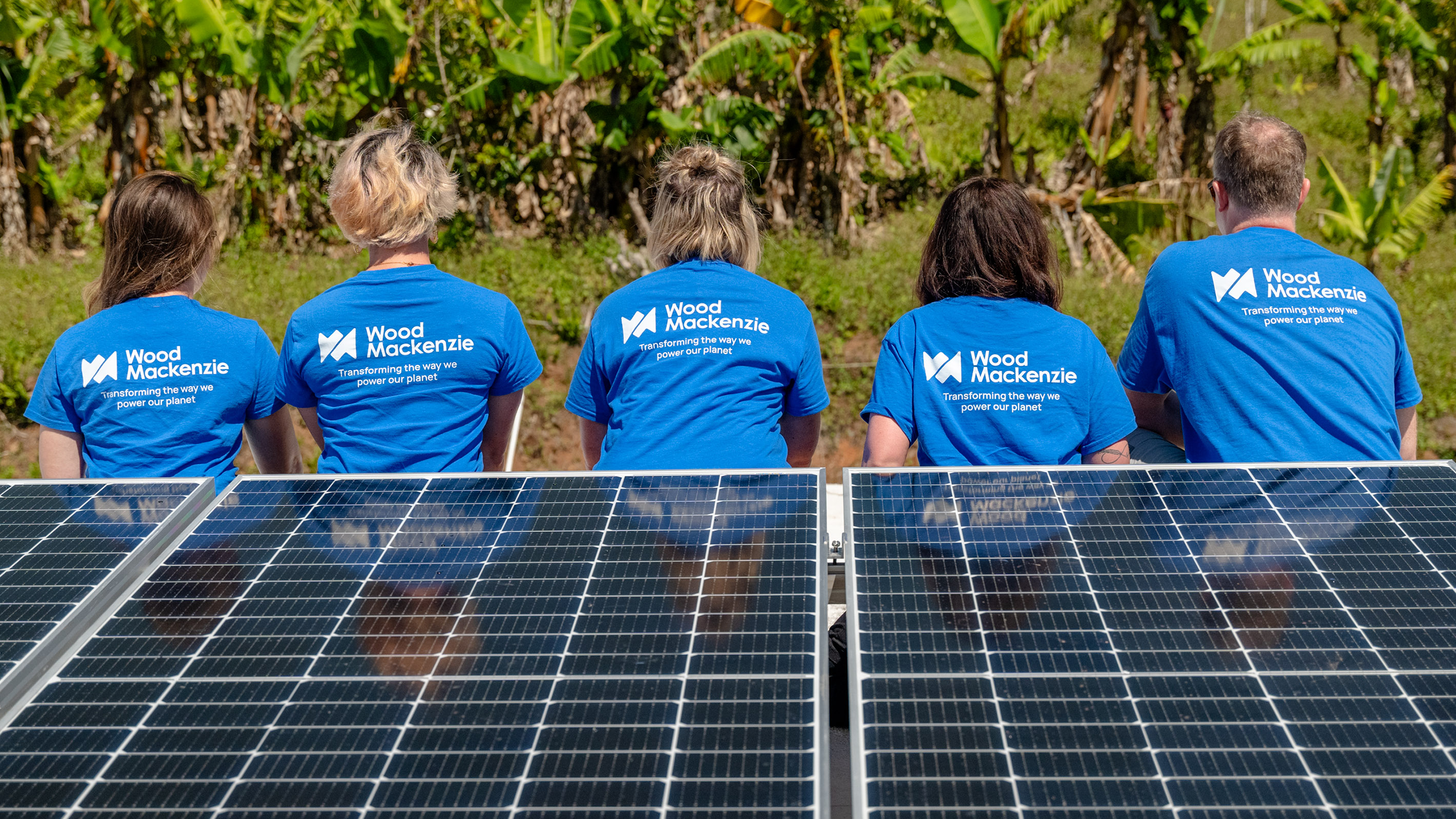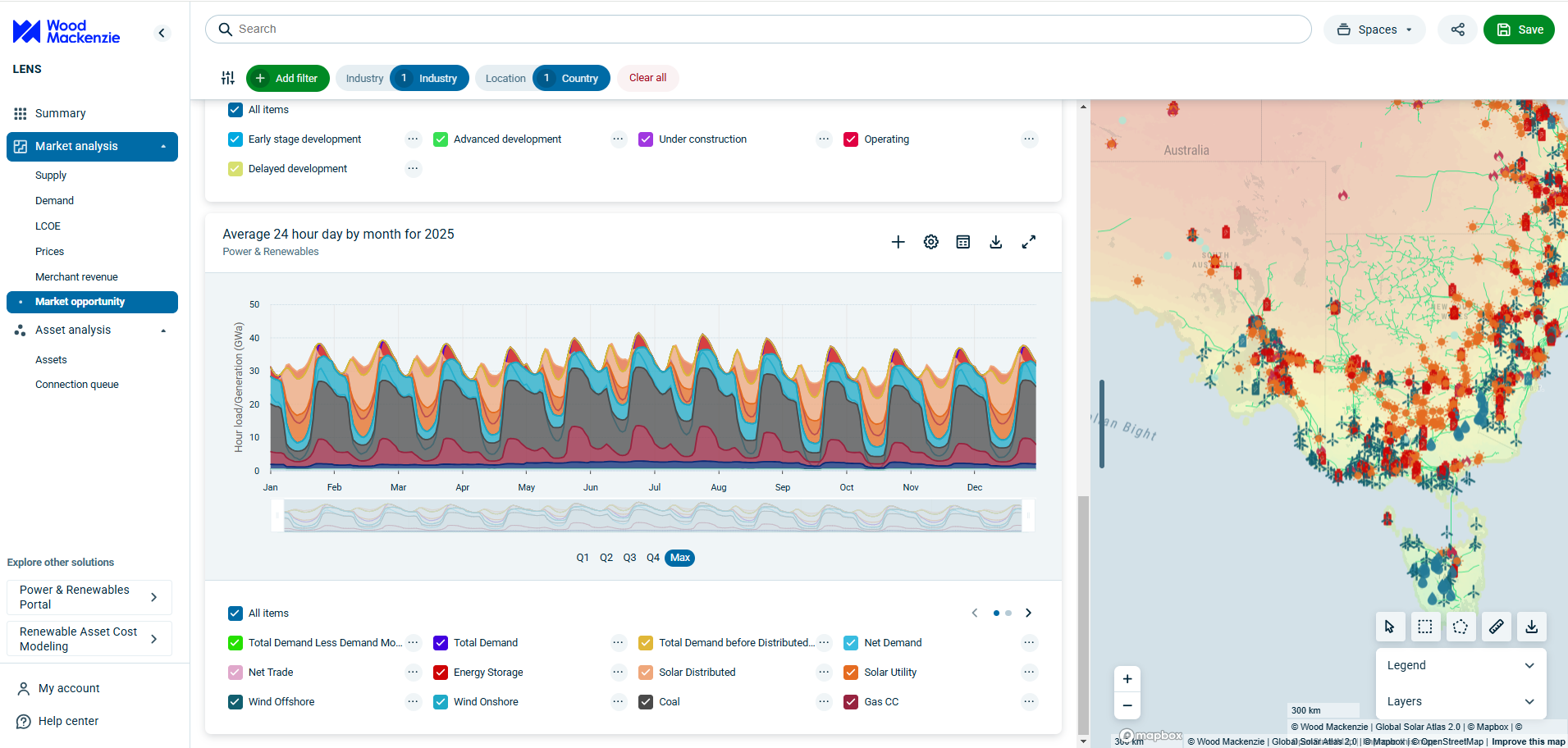What lies ahead for hydrogen and low-carbon ammonia?
We explore the market trends and challenges affecting the long-term outlook
4 minute read
Murray Douglas
Vice President – Hydrogen & Derivatives Research

Murray Douglas
Vice President – Hydrogen & Derivatives Research
Murray is responsible for Wood Mackenzie’s Global coverage across the hydrogen value chain.
Latest articles by Murray
-
Opinion
eBook | The hydrogen opportunity from now to 2050: what utilities and developers need to know
-
Opinion
eBook | The hydrogen opportunity from now to 2050: what industrial players need to know
-
Opinion
eBook | Investing in hydrogen from now to 2050: what you need to know
-
Opinion
What lies ahead for hydrogen and low-carbon ammonia?
-
Opinion
Ebook | Overcoming the challenges around hydrogen deployment
-
Opinion
Hydrogen offtake contracts: securing project outcomes
The most recent global Hydrogen Conference, hosted by Wood Mackenzie, brought together stakeholders from across the value chain to discuss the most pertinent topics in this fast-changing industry. At the event, we heard from leading experts on the outlook for the hydrogen market, as well as detailed analyses from our own experts in our Research and Consulting practices.
We shared insights on the long-term outlook for hydrogen and how the globally connected market for low-carbon ammonia will develop more quickly than previously expected.
Fill out the form at the top of the page to download a free extract from our opening presentation on ‘Hydrogen market developments’, and read on for a short summary of the session:
Hydrogen growth
The low-carbon hydrogen market’s announced capacity has now surpassed 140 million tons per annum (Mtpa), yet the growth seen in recent years is slowing. While the industry has been fuelled by ambitious giga-projects that have influenced capacity forecasts, many projects in advanced planning are yet to be announced, creating a less certain outlook and suggesting growth predictions may be overstated.
Project cancellations, which now amount to 2.5 Mtpa, have become increasingly visible, raising concerns that more cancellations or delays could follow. These cancellations have been driven by portfolio streamlining, cost inflation, and policy weaknesses, coupled with regulatory uncertainties and the lack of a mature market or secured offtake agreements.
Concerns over mismatch in FIDs and binding offtake agreements
Currently, the hydrogen supply with final investment decisions (FIDs) in place totals around 5.5 Mtpa, equivalent to over 6% of the carbon-intensive hydrogen market, with this capacity concentrated in relatively few markets and end-use sectors. Attention is now shifting to securing offtake agreements, particularly as blue hydrogen producers, who have a competitive edge on costs, look for further market share in NE Asia.
However, a growing gap between projects reaching FID and those with binding offtake agreements is causing some uncertainty. While upcoming auction results are expected to lower uncontracted volumes, investor pressure is increasing for more reliable financial commitments in project planning. For developers, long-term offtake agreements are critical to unlocking additional FIDs, though securing these contracts comes with challenges. Risks linked to project schedules, auction alignment, and a lack of regulatory clarity remain in place.
In the near term, the pace of FIDs and contracting activity will be central to shaping the hydrogen market’s direction. Developers face mounting pressures to manage project timelines amid a regulatory environment that is still taking shape.
Ambitious goals for RFNBO-compliant ammonia, but outlook uncertain
Europe has set bold targets for incorporating RFNBO (Renewable Fuels of Non-Biological Origin)-compliant ammonia into existing industries, but the market penetration needed to meet these targets remains uncertain.
Several factors could shape how RED III targets are adopted by Member States and the resulting uptake of RFNBO. In the upper range, uptake could be affected, for example, by the US loosening 45V rules, thereby pushing more RFNBO ammonia to the EU. And in the lower range, the fertiliser industry may be granted lower RFNBO targets. Or if there is a higher uptake of RFNBO-hydrogen into refining that will offset requirements ammonia.
Blue ammonia a viable alternative in Europe
Imports of blue ammonia, which offer lower emissions compared to conventional ammonia, could account for a higher market share in Europe. However, pricing for RFNBO-ammonia remains highly variable, and market uncertainties related to demand further complicate price projections. The impact of EU carbon pricing on blue ammonia imports is significant, as it could either support or reduce demand for low-carbon imports, with implications that extend to North East Asian markets. Possible scenarios include escalating ETS (Emission Trading System) allowances and delays in green ammonia projects beyond 2030 due to cost pressures, while the European Commission tightens rules around the inclusion of RFNBO.
A globally connected market for low-carbon ammonia will develop quickly
If we look at a low-carbon ammonia imports analysis for 2030, we see in NE Asia, buyers are prioritising short-term price competitiveness, opening opportunities for all grades of low-carbon ammonia, provided they meet specific carbon intensity (CI) criteria.
In Europe, there remains a preference for green ammonia to help meet RED III targets. However, blue ammonia remains a decarbonization solution within Europe. But despite its potential, the level of policy support for blue ammonia in the region is still under discussion.
This uncertainty in Europe’s demand for blue ammonia will play a critical role in shaping global pricing trends, impacting NE Asian markets and likely accelerating global market connectivity earlier than previously expected.
Learn more
Don’t forget to fill out the form at the top of the page to download a complimentary extract from our full presentation on ‘Hydrogen market developments’, complete with extra data, graphs and more detailed analysis.
Plus, click here to register for Wood Mackenzie's next Hydrogen Conference 2025.






